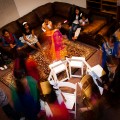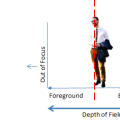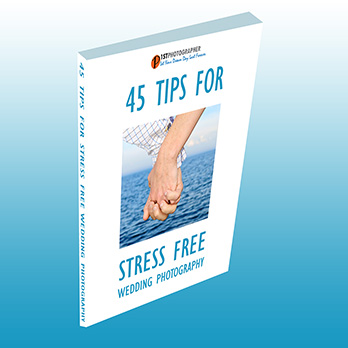Understanding photographic exposure reciprocity is one of the key things for a beginner photographer and it is about getting the right amount light to reach your recording media – film or digital sensor. Today’s cameras take properly auto-exposed photos most of the time yet one needs to know about exposure to be a better photographer.
Thankfully understanding photographic exposure reciprocity can be done using the simple analogy of a faucet. There 3 things that influence exposure:
- Aperture: The width of the lens diaphragm – a small opening inside the lens through which light passes.
- Shutter speed: The time the shutter remains open.
- Sensitivity of film or digital sensor.
If you imagine a faucet, aperture is by how much the valve is open, shutter speed is the duration for which the faucet is open and the sensitivity is water pressure. The amount of water you collect from the faucet depends on these 3 things and it is analogous to the amount of light you are using to take the photograph.
Stopping up is opening the aperture wider and/or keeping the shutter open longer for letting more light through. Stopping down is the opposite.
Thankfully the camera comes with a scale to measure all of the above.
This is how the aperture scale looks like:
1.4 2 2.8 4 5.6 8 11 16 22 32 45
Intermediate numbers are possible in present day SLRs, just like the 1/8 and 1/16 in the measuring tape. But let us stick to the key numbers for the sake of explaining the concept.
There are 2 key points to remember:
- Higher the number, smaller the opening and hence less light passes through
- The amount of light doubles with every number as you move from right to left in this scale
This is how the shutter speed scale looks like:
1 2 4 8 15 30 60 125 250 500 1000 2000 4000
Intermediate numbers are possible in present day SLRs, but there are 2 key points to remember:
- Higher the number, shorter is the time the shutter stays open. This is because the numbers are on an inverse scale. In common speak the number 125 means 1/125th of a second.
- The amount of light doubles with every number as you move from right to left in this scale
At this point it is easy to understand the concept of photographic exposure reciprocity. If you change the aperture from 5.6 to 8 and the shutter speed from 250 to 125 the amount of light you use to take the photograph does not change. This is because while you halved the light by changing the aperture, you doubled it by changing the shutter speed, as a result of which the amount of light remained the same.
Now that we have got the difficult part away, we can talk about sensitivity or speed of the recording media. We have said before, using our faucet analogy that sensitivity is the water pressure. Thankfully there is a scale as well for measuring the sensitivity and that is the ISO scale:
25 30 50 60 100 125 200 250 400 500 800 1000 1600
There are 2 key points to remember:
- Higher the number, higher the speed and higher the sensitivity thus less light needed for the shot
- Sensitivity doubles with doubling of the numbers. 125 is twice as sensitive as 60, 800 is twice as sensitive as 400.
The following settings are equivalent from the point of view of amount of light needed to take the shot:
f5.6/250/ISO 400 f5.6/500/ISO 800
f11/250/ISO 800 f16/500/ISO 200
Although these settings bring the same amount of through the lens, these are not the same since they will not produce the same photograph from the same scene. These settings influence qualities such as depth of field or motion in the image other than just exposure. And that is why understanding photographic exposure reciprocity is and what it is not is key to taking better photographs.






